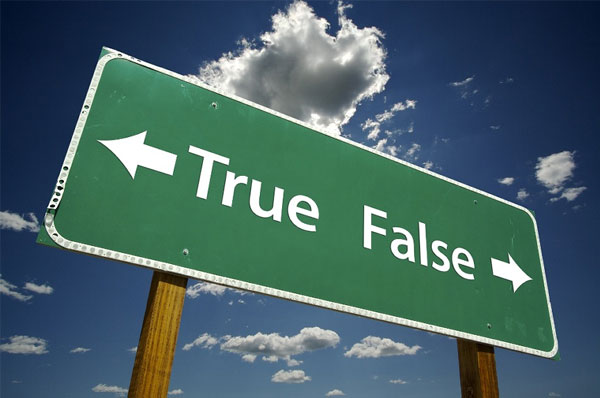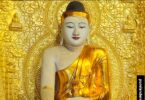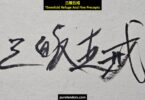There are some who claim to teach so-called ‘pristine’ Pure Land Buddhism, of the so-called ‘Shandao lineage’. Below are some of their many misconceptions in five of their books, as hereby clarified. The books are not named, to prevent readers from being further confused by them.
[1] Is is so that the 18th vow of Amituofo is his only fundamental vow? No, as all of his 48 vows are fundamental, working together, including the 19th and 20th vows, for guiding and receiving many kinds of beings to his Pure Land.
[2] Is it so that Buddhas only witnessed teaching of the Amitabha Sutra? No, as there was also the Buddha Of Abundant Treasures bearing witness to Sakyamuni Buddha’s teaching in the Lotus Sutra for instance.
[3] Is it so that Great Master Shandao’s interpretation of the Pure Land teachings is completely different from that of other lineage masters? No, or the whole Chinese Pure Land tradition would not be able to continue to thrive in harmony, with each Great Master supporting one another’s teachings.
[4] Is it so that to undertake Mixed Practices is like begging everywhere, without finding a haven? No. This is a false dichotomy (fake division), as Mixed Practices can and are supposed to support the Main Practice of Nianfo (i.e. mindfulness of Amituofo’s name) if dedicated for the same purpose of reaching Pure Land. It is not a case of having either Mixed Practices or the Main Practice only.
[5] Is it so that we should depend completely on Amituofo’s power, to stop ‘counting on’ self-power? No, as we are supposed to depend on both Amituofo’s other-power and our self-power, as Pure Land practice is dependent on self-and-other-power working together.
[6] Is it so that by abandoning self-power, we will be able to depend entirely on other-power? No, as it takes some self-power to learn about and cultivate the Three Provisions, to connect to the other-power.
[7] Is it so that those with practices of other schools cannot practise Nianfo? No, as Nianfo practice can be practised by all, for reaching Pure Land, as long as the Three Provisions are there.
[8] Is it so that those who practise Nianfo should only do it exclusively, and not meditate, chant sutras, mantras, practise repentance and other practices? No, as no Patriarch taught this, while the Patriarchs taught that Mixed Practices can support the Main Practice of Nianfo. Of course, when practising Nianfo, we should be wholehearted.
[9] Is it so that we should dedicate merits to so-and-so before to all beings? No, as it should be the other way round, so as to practise compassion and generosity to all first, which already includes so-and-so, and also creates more merits.
[10] Is it so that we do not need to dedicate merits from non-Nianfo practices to reach Pure Land? No, as all merits from all practices, which include Nianfo and non-Nianfo practices should be dedicated for reaching Pure Land.
[11] Is it so that our Faith in Pure Land can be thought in terms of laying down a bet? No, as such is not true unshakeable Faith, it is still with doubt. Faith can be built up with proper learning and practice.
[12] Is it so that if we cannot Nianfo because of suffering at death, we can still reach Pure Land? No, as the 18th vow and the Amitabha Sutra is clear that all Three Provisions are needed. This is why support-chanting is very helpful in providing guidance. However, Nianfo need not be in terms of verbal chanting, but as mindfulness of Amituofo in the mind.
[13] Is it so that we might be unconscious when dying? No, as the dying process is a mentally conscious one, of the consciousness actively departing from the body. We will be mentally conscious even if physically unconscious.
[14] Is it so that there is no specific standard stated for Nianfo practice? No, as the Amitabha Sutra states to be ‘wholehearted without being scattered’, which is to be utterly sincere.
[15] Is it so that one of those who taught these misconceptions was reborn as a monk for countless lifetimes, went to all heavens, and had studied all Dharma teachings, as self-claimed? No, or this list of obvious misconceptions would not exist. And if all heavens were reached, including the Pure Abodes, which guarantees self-liberation in that lifetime, he would not still be unenlightened, also as contradictorily self-claimed.
[16] Is it so that Great Master Shandao is the founder of the Pure Land tradition, and that only what he taught should be followed? No, as all 13 Chinese Pure Land Patriarchs’ teachings are harmonious together and can be followed. Not understanding this harmony is to misunderstand their teachings. The 12 other Patriarchs following the 1st Patriarch Great Master Huiyuan never disagreed that Great Master Huiyuan should be regarded as the First Patriarch. He was latest praised by the 13th Patriarch Great Master Yinguang too.
[17] Is it so that Great Master Yinguang teach not to have Mixed Practices? No, as he praised them, along with the Main Practice of Nianfo, teaching to dedicate the merits of all of them for the single purpose of reaching Pure Land. Only having many Mixed pPactices yet without the single Main Practice is unwise.
[18] Is it so that the Chinese lineage of Pure Land Patriarchs is not the one approved by the 13th Patriarch? No, as it clearly is, as universally recognised in the Chinese Pure Land tradition. To claim otherwise is divisive in nature, not very different from creating a schism.
[19] Is it so that Great Master Shandao was the only great master who taught the so-called ‘pristine’ Pure Land teachings? No, as all 13 Pure Land Patriarchs did, or they would not be regarded by the Pure Land community as representative enough of the Pure Land tradition to be its Patriarchs. All of them taught according to the climate of their times to guide various beings accordingly. In instances when what they taught are linked to other Buddhist traditions, this demonstrated the Pure Land teachings’ universal nature, thus reaching out to more, yet without discounting their actual teachings. All of their teachings are pristine for reaching of Pure Land.
[20] Is it so that other Buddhist schools’ practices make Pure Land practice complicated and ‘not easy’? No, as the main Pure Land practice is always the Easy Path, even if, as wished, supported by other more complex practices. In fact, having more supportive practices can help attain higher grades of rebirth easier. Not having them makes this more difficult.
[21] Is it so that having Mixed Practices along with the Main Practice of Nianfo means not having wholehearted Nianfo to reach Pure Land? No, of course not, as the Main Practice should never be forsaken, while having also Mixed Practices never meant to forsake the Main Practice; but to support it.
[22] Is it so that the 20th vow of Amituofo does not receive beings to his Pure Land in this lifetime? No, it does receive beings of medium spiritual roots in this lifetime too. [All beings of lower, medium and higher roots roots can reach Pure Land in this lifetime via Vow #18, 20 and 19 respectively, as long as they are able to give rise to the Three Provisions of Faith, Aspiration and Practice in time. These vows have overlapping principles too.]
[23] Is it so that the Easy Path is only in terms of the 18th vow of Amituofo? No, as the Easy Path is in terms of all Pure Land practices for reaching Pure Land, as encompassed by the 19th and 20th vows too.
[24] Is it so that giving rise to Bodhicitta, performing wholesome deeds and such do not connect to Amituofo’s 19th vow? No, they do, if dedicated for reaching Pure Land.
[25] Is it so that Great Master Shandao taught that all should only Nianfo exclusively? No, as he never taught that Mixed Practices should be abandoned, though he did teach the importance of being focused. In fact, Mixed Practices can support the Main Practice of Nianfo. No Pure Land Patriarch ever taught to avoid all non-Nianfo practices as Supportive Practices.
[26] Is it so that no Buddha other than Amituofo created a Pure Land for us? All Pure Lands were created by all Buddhas for unenlightened sentient beings.
[27] Is it so that the 18th and 19th vows operate mutually exclusively? No, they can operate together with overlapping principles.
[28] Is it so that Amituofo attained Buddhahood mainly for those who practise according to the 18th vow? No, as he has perfect compassion for all beings, he receives beings of all spiritual roots via the 19th and 20th vows too, which are more for those of the higher and medium spiritual roots (while the 18th vow is applicable to all, including those of lower roots).
[29] Is it so that it does not matter if one believes in Pure Land practice’s principles, as long as the name of Amituofo is called, to be born in Pure Land? No, as lack of belief is the lack of Faith, the very first of the Three Provisions.
[30] Is it so that rebirth in Pure Land cannot be attained unless there is practice with great diligence to eliminate all stray thoughts? No, as what matters is having wholehearted Nianfo powered by the true Faith and sincere Aspiration.
Summary: The misconceptions above cause needless and harmful divisiveness in the Buddhist and Pure Land community, by insisting that only what one master taught is pristine, while what all others teach is not pure. Here is a brief summation of some of the major mistakes.
[A] With Main Practice & With Mixed Practices: The Pure Land Patriarchs taught in terms of having the Main Practice (of Nianfo) and Mixed Practices (of non-Nianfo that are supportive of the Main Practice). Although the terms they use might be slightly different, they are essentially the same in meaning.
[B] Without Main Practice & With Mixed Practices: None of them taught to abandon the Main Practice, to have only Mixed Practices. (Main Practice by itself is adequate for reaching Pure Land, while Mixed Practices by themselves only are of course inadequate for reaching Pure Land.)
[C] With Main Practice & Without Mixed Practices: None of them taught to abandon Mixed Practices entirely, to have only the Main Practice in an absolutely exclusive way – unless one is running out of time.
[D] Without Main Practice & Without Mixed Practices: For the sake of completion in this list, of course, none of them taught to abandon both Main Practice and Mixed Practices.
Conclusion: There is false dichotomy that when one has Mixed Practices, one will not have the Main Practice of Nianfo. While it is good to ensure the Main Practice is done well, to insist on focusing only on it discourages others from practising further to attain higher grades of birth in Pure Land.
Not that Nianfo (with the Three Provisions) by itself is not enough to reach Pure Land, but the natural and diligent creating of more merits from other Mixed Practices in everyday life also help to lessen suffering for many others, and to lessen personal obstacles on the deathbed. Insisting all to enter Pure Land only by the 18th vow forcibly simplifies Pure Land practice for the more sophisticated, who already practise more than the Main Practice and do not wish to give up their Mixed Practices.
There is occasional flip-flopping of viewpoints (in past and newer books) too, along with selective quotation and misinterpretation of that quoted to fit the one-sided misconceptions above. There is also inconsistency in speaking of the Three Provisions, at times speaking of just one provision or two (such as just wishing to be reborn in Pure Land, or just chanting the name of Amituofo), without connecting all three together and defining them properly. This makes such ‘Pure Land teachings’ not only not pristine, but dangerously inaccurate. (This list will continue to be extended and shared upon discovery of more mistakes.)
Related Articles:
只有善导大师是净土祖师吗?
Is Great Master Shandao The Only Pure Land Patriarch?
https://purelanders.com/2017/04/11/is-great-master-shandao-the-only-pure-land-patriarch
Biography Of The First Patriarch Of The Chinese Pure Land Tradition Great Master Huiyuan
https://purelanders.com/2017/04/17/biography-of-the-first-patriarch-of-chinese-pure-land-tradition-great-master-huiyuan
Further Questioning So-Called ‘Pristine’ Pure Land Buddhism
https://purelanders.com/2017/12/30/further-questioning-so-called-pristine-pure-land-buddhism






It is good that no names were mentioned, so as to address the Dharma issues impartially. However, it is also good to name names, so that more can know who to avoid learning from, so as to prevent confusion.
The issues above are reminiscent of the misconceptions by Jingben 净本, Huijing 慧净, Jingzong 净宗, Xinyuan 信愿 and company of Hongyuansi 弘愿寺, as reflected in their books and talks, which run counter to the actual spirit of the 13 Pure Land Patriarchs’ teachings. Thank you for systematically listing the issues. In Singapore, the organisation’s name is ‘新加坡 净土宗 Singapore Pure Land Buddhism’.
If you are in Singapore, the place to learn orthodox Chinese Pure Land teachings from is at the classes of http://www.purelandclass.wordpress.com (and here). Namo Amituofo
May this list be helpful…
慧净、净宗、净本、信愿法师是弘扬本愿法门,所以《法音》杂志此文指出的所有本愿法门邪说,他们都有,下面是详细介绍。
慧净、净宗法师虽打着善导流旗号,但终究承认在弘扬本愿法门
http://blog.sina.com.cn/s/blog_9ebd58050102v0s1.html /
http://tieba.baidu.com/p/3295902818
此四篇为姊妹篇,指出慧净、净宗法师对‘要门与弘愿、正行与杂行’的错误解读
慧净、净宗法师判教基石(要门与弘愿、正行与杂行)违背经论
http://blog.sina.com.cn/s/blog_9ebd58050102v1gt.html /
http://tieba.baidu.com/p/3316295658
本愿法门慧净、净宗法师歪解善导大师净土思想之“要门与弘愿”
http://blog.sina.com.cn/s/blog_9ebd58050102v0yx.html /
http://tieba.baidu.com/p/3308532820
本愿法门邪说“弘愿专指第十八愿”违背净土经论
http://blog.sina.com.cn/s/blog_9ebd58050102v11u.html /
http://tieba.baidu.com/p/3310747061
本愿法门慧净、净宗法师歪解善导大师净土思想之“正行与杂行”
http://blog.sina.com.cn/s/blog_9ebd58050102v153.html /
http://tieba.baidu.com/p/3309775556
以下三篇为姊妹篇,指出本愿法门的主要邪说:独举第十八愿
中国佛协批驳本愿法门:判四十八愿中独十八愿真实,余皆虚假
http://blog.sina.com.cn/s/blog_9ebd58050102v11v.html /
http://tieba.baidu.com/p/3310803896
中国佛教协会批驳本愿法门邪说:独十八愿真实,故而称本愿
http://blog.sina.com.cn/s/blog_9ebd58050102v11x.html /
http://tieba.baidu.com/p/3310821085
中国佛教协会批驳本愿法门邪说:唯一的希望就是依第十八愿
http://blog.sina.com.cn/s/blog_9ebd58050102v11w.html /
http://tieba.baidu.com/p/3310784944
中国佛协批本愿法门:信本愿即生不必精进念佛,念佛只是报恩
http://blog.sina.com.cn/s/blog_9ebd58050102v0vq.html /
http://tieba.baidu.com/p/3299583730
中国佛教协会批驳本愿法门“恶人正机”邪说
http://blog.sina.com.cn/s/blog_9ebd58050102v0yj.html /
http://tieba.baidu.com/p/3300496711
中国佛协批驳本愿法门:六度万行都是杂行,是对弥陀的不信任
http://blog.sina.com.cn/s/blog_9ebd58050102v1ck.html /
http://tieba.baidu.com/p/3312843129
中国佛教协会批驳本愿法门邪说:不强调戒律、不要求发菩提心
http://blog.sina.com.cn/s/blog_9ebd58050102v1cv.html /
http://tieba.baidu.com/p/3313363618
中国佛协批本愿法门‘纯他力’邪说:其基本理论单纯强调他力
http://blog.sina.com.cn/s/blog_9ebd58050102v1dj.html /
http://tieba.baidu.com/p/3313973105
中国佛教协会警告:本愿法门对正法住世将起到破坏性的影响!
http://blog.sina.com.cn/s/blog_9ebd58050102v1ed.html /
http://tieba.baidu.com/p/3314519160
中国佛教协会批本愿法门:理论基础不圆融、事相易出很多流弊
http://blog.sina.com.cn/s/blog_9ebd58050102v1gq.html
此主题分为以下专栏:
本愿法门慧净、净宗法师把“一向专念”歪解为“一向只念”
http://blog.sina.com.cn/s/blog_9ebd58050102v1fg.html /
http://tieba.baidu.com/p/3315739715
本愿法门慧净、净宗法师歪解善导大师净土思想之“一向专念”
http://blog.sina.com.cn/s/blog_9ebd58050102v1f4.html /
http://tieba.baidu.com/p/3315170889
本愿法门慧净、净宗法师把“一向专念”歪解为“一向专称”
http://blog.sina.com.cn/s/blog_9ebd58050102v1fi.html /
http://tieba.baidu.com/p/3315748504
本愿法门慧净、净宗法师歪曲善导大师净土思想之“往生正因”
http://blog.sina.com.cn/s/blog_9ebd58050102v1il.html /
http://tieba.baidu.com/p/3318249999
慧净、净宗法师邪说:念佛往生后,马上成佛,超越九品往生
http://blog.sina.com.cn/s/blog_9ebd58050102v1ih.html /
http://tieba.baidu.com/p/3318816458
印光大师:净土祖师教理没有什么“纯正与不纯正”之分
http://blog.sina.com.cn/s/blog_9ebd58050102v154.html /
http://tieba.baidu.com/p/3309859028
本愿法门慧净、净宗法师歪曲《观经》上品往生的“发菩提心”
http://blog.sina.com.cn/s/blog_9ebd58050102v1ni.html /
http://tieba.baidu.com/p/3323582795
慧净法师歪解弥陀第十九愿:此愿有临终接引,依他愿修就没有
http://blog.sina.com.cn/s/blog_9ebd58050102v1ou.html /
http://tieba.baidu.com/p/3330738990
慧净、净宗法师诽谤弥陀第二十愿:不是今生往生而是三生果遂
http://blog.sina.com.cn/s/blog_9ebd58050102v1pa.html /
http://tieba.baidu.com/p/3328092614
慧净、净宗法师诽谤《阿弥陀经》:不是今生往生而是三生果遂
http://blog.sina.com.cn/s/blog_9ebd58050102v1pb.html /
http://tieba.baidu.com/p/3328106390
慧净、净宗法师歪解“疑惑佛智”:佛智即一句佛号,其他不是
http://blog.sina.com.cn/s/blog_9ebd58050102v1qv.html /
http://tieba.baidu.com/p/3331086134
慧净、净宗法师:“诸行回向”是“疑惑佛智”,劝你不要回向!
http://blog.sina.com.cn/s/blog_9ebd58050102v28j.html /
http://tieba.baidu.com/p/3334750453
本愿法门慧净、净宗法师:只有念佛才是“随顺佛意、随顺佛愿”
http://blog.sina.com.cn/s/blog_9ebd58050102v2j9.html /
http://tieba.baidu.com/p/3335919179
本愿法门净宗法师邪见:《观经》要门只摄善人,不摄恶人?
http://blog.sina.com.cn/s/blog_9ebd58050102v2ku.html /
http://tieba.baidu.com/p/3336527404
本愿法门净宗法师反对带业往生却自相矛盾
http://blog.sina.com.cn/s/blog_9ebd58050102v2rs.html /
http://tieba.baidu.com/p/3336980689
导读:本文原刊登于中国佛教协会会刊《法音》杂志,代表中国佛教协会对本愿法门的看法。本愿法门打着善导大师的旗号,却从根本上歪解了善导大师的原意,其理论真正来源主要是日本的净土真宗。如下文中所言:“其基本理论单纯强调他力,多与经论不符,如任其理论流传佛教界,对正法住世将起到破坏性的影响”。
《中国佛教协会:警惕本愿法门对净土宗的危害及误导》
本愿念佛法门,又称净土真宗,起源于日本,大约对应中国的晚唐宋初时期,由日本亲鸾上人创立。
亲鸾上人撰《教行信证文类》六卷,作为创立净土真宗的根本圣典。真宗以净土三经(《无量寿经》、《观无量寿佛经》、《阿弥陀经》)为依据,崇奉印度的龙树菩萨、世亲菩萨以及中国的昙鸾大师、道绰大师、善导大师为祖师,加上日本的源信法师、源空法师两位,并称为三国七祖。因为该宗号称是继承唐代善导大师的“本愿”思想,故称本愿法门。
本愿法门与一般净土法门差异在于独举《无量寿经》中阿弥陀佛四十八大愿之中的第十八愿,即“我作佛时,十方众生,闻我名号,至心信乐。所有善根,心心回向,愿生我国,乃至十念,若不生者,不取正觉。唯除五逆,诽谤正法。”甚至进一步判四十八愿中,独十八愿真实,余皆虚假,故而称本愿。
在此思想基础上,真宗强调末法众生都是下劣罪人,绝无自度的能力,唯一的希望就是依第十八愿,由阿弥陀佛救度而往生西方净土。由于本愿,只要具信,皆得往生,不必精进念佛,念佛只是报恩之举。故此,本愿法门不要求严持戒律,亲鸾本人就曾破戒娶妻生子。今天,日本净土真宗寺院的“僧人”都是结婚生子,子传父业的。
此外,本愿法门还有一个相当独特的观点,即“善人尚能往生,何况恶人哉”的“恶人正机”说。认为“布施、持戒、禅定、精进等一切杂行都是对阿弥陀佛的不信任”,主张“为恶往生”,“舍弃圣道”。
从历史上看,本愿法门的形成和传播应该是日本佛教本土化、平民化的一种尝试。我们知道,当年鉴真大师东渡日本,目的之一是给日本天皇传戒。这就反映了当时来自中国的佛教各宗如天台、律宗都是相当宫廷化的,佛教主要限于上层统治者和武士阶层中,下层人民如渔夫、农民较难有机会亲近佛法。
这样,本愿法门提出的“恶人正机”等主张,就使得难以受持基本五戒的众多下层人民也有被救度的可能。然而,本愿法门也因此和中国民间一些“附佛外道”一样,沾染了一定的政治色彩。在日本历史上,就曾爆发过多次真宗农民起义。
站在历史的角度看本愿法门,我们应该公允客观地看待它。一方面,本愿法门不强调戒律、不要求发菩提心,对于后期日本佛教寺院的戒律废驰有很坏的影响。其基本理论单纯强调他力,多与经论不符,如任其理论流传佛教界,对正法住世将起到破坏性的影响。另一方面,也应看到这个法门对阿弥陀佛愿力的弘扬,使一些原本无缘接触佛法的下层人民有了念佛往生的可能。对于近、当代本愿法门在大陆的传播,不少出家、在家大德都曾引经据典,从教理上予以驳斥,指出过弊端。
我们以为,今天汉地佛教净土宗已经深入民间,而且在善导大师之后,历经十多位净宗祖师的传承,早已形成对近当代汉人较为契机契理的汉地净土法门,其思想代表当推民国印光大师的系列著作。本愿思想作为一种特殊历史条件下出现的、理论基础不圆融、事相易出很多流弊的特殊方便,在汉地的传播是不值得提倡的。
(中国佛教协会《法音》杂志编辑部)